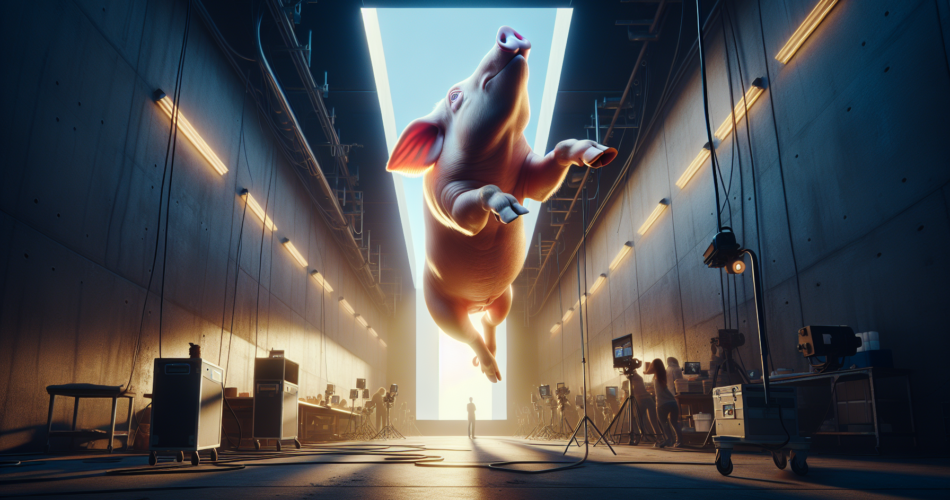Pigs are among the most intelligent and adaptable animals, known for their complex behaviors and social structures. However, one remarkable anatomical feature becomes evident upon closer inspection: the limitations of their gaze direction. Unlike many other mammals, pigs struggle to look upward due to the unique structure of their necks and skulls. This article delves into the specifics of pig anatomy and explores the evolutionary adaptations that have led to this intriguing limitation.
Understanding Pig Anatomy: The Limits of Gaze Direction
Pigs possess a robust and compact skeletal structure that supports their lifestyle as ground foragers. Their necks are relatively short and muscular, which plays a critical role in their ability to root through soil for food. However, this anatomical configuration results in a significant limitation in their ability to tilt their heads. The cervical vertebrae in pigs do not allow for a broad range of motion, particularly in the upward direction, constraining their ability to gaze at the sky.
Additionally, the shape and orientation of a pig’s skull greatly influence their field of vision. The structure of their eyes, set on the sides of their heads, gives them a wide peripheral view but restricts their ability to focus on objects directly above them. This anatomical arrangement is a trade-off; while it enables pigs to remain vigilant against predators approaching from the sides, it simultaneously hampers their upward gaze, rendering it difficult for them to observe birds, clouds, or other creatures soaring above.
The implications of this limitation extend beyond mere observation; they affect pigs’ behavior and interactions with their environment. For instance, pigs may rely on their sense of hearing and smell to navigate and assess their surroundings, often compensating for their restricted visual capabilities. This adaptation underscores the complexity of pig anatomy and behavior, revealing a fascinating connection between structure and lifestyle.
Evolutionary Adaptations: Why Pigs Can’t Look Upward
The evolutionary history of pigs provides valuable insights into their limitations in gaze direction. Pigs are descended from wild boars, which have adapted to a terrestrial lifestyle focused on foraging for roots, tubers, and other ground-level food sources. The evolutionary pressures faced by these ancestors favored physical traits that enhanced their ability to dig and root in the soil, leading to the development of a stocky body and a short neck.
As pigs evolved to exploit a variety of habitats, their anatomical features became increasingly specialized for life on the ground rather than in trees or open skies. The inability to look upward is an evolutionary trade-off that has allowed pigs to thrive in their ecological niche. By focusing on acquiring food at or near ground level, pigs have developed an efficient foraging strategy, albeit at the cost of upward mobility in their gaze.
Moreover, the social structures of pigs have also influenced their evolutionary trajectory. Living in groups, pigs utilize vocalizations and body language to communicate, which may mitigate the need for upward visual awareness. Their social interactions often occur at ground level, reinforcing their anatomical adaptations. Therefore, the inability to gaze at the sky can be seen not just as a limitation, but as a reflection of their evolutionary journey toward becoming successful ground-dwelling animals.
In conclusion, the anatomical limits of pigs’ gaze direction reveal a fascinating interplay between form, function, and evolution. Their unique skeletal structure and adaptations illustrate the trade-offs that come with a lifestyle primarily focused on terrestrial foraging. While their inability to look upward may seem like a simple anatomical curiosity, it highlights the intricate relationships between an animal’s environment, behavior, and evolutionary history. Understanding these limitations not only enriches our knowledge of pig biology but also deepens our appreciation for the complexities of life on Earth.

